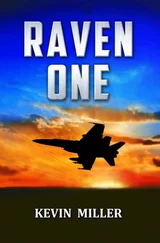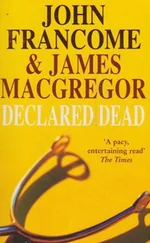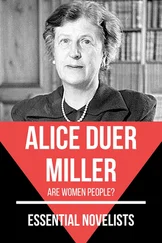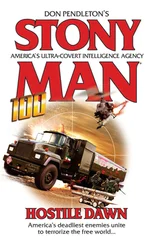“Yes, sir,” Meyerkopf said as he heard the line go dead. He locked eyes with his aide, whose face revealed a mixture of heartfelt sorrow and boiling anger that his boss was leaving the ship tomorrow. Summarily relieved of command.
Meyerkopf frowned then said, “Send Captain Browne to my stateroom right away.”
(Thirty miles northwest of Puerto Rico)
Olive sat in the cockpit of Firebird 300, and, from 35,000 feet, looked over her right shoulder at the northwest coast of Puerto Rico, some thirty miles away. Below, splotchy white clouds dotted the surface of the Atlantic, with larger concentrations over the island. San Juan was visible eighty miles distant with a towering cumulus cell over the mountains south of the city. On the other side of the cell was the former Naval Air Station at Roosevelt Roads, now known as Aeropuerto Jose Aponte de la Torre . Whoever owned it, the 11,000 feet of concrete was still there and could serve as a landing strip. With the ship 200 miles behind, a veteran carrier pilot like Olive was always considering options in case she needed to land her Hornet in a hurry.
To her left, flying tac wing formation in 303, was Lieutenant “Dusty” Rhodes, the squadron’s senior lieutenant. The JOs regarded Dusty as a steady leader. Olive could depend on him to hang on in what would be a varsity intercept.
Ahead and to the left approximately fifty miles were the Blackjacks , cruising at a transonic airspeed in the high 30s. They had been unescorted since they had passed east of the Bahamas. Forty minutes earlier the two Firebird pilots had been strapped into their jets on Coral Sea’s waist catapults waiting for the word to launch. Once the Blackjacks indicated they were travelling down the Bahamas chain for a probable landing in Venezuela, the ship had launched the alert. With the Condor E-2 already airborne over the Mona Passage to vector them to the bogeys, a Super Hornet tanker was launched to refuel the Firebirds once relieved on station.
Olive noted the radar symbology on her display as she worked the intercept geometry in her head. She turned east northeast to affect the rendezvous with the Blackjacks who were cruising on a southeast heading: 39,000 feet at.95 mach. Olive could not allow herself to get slow or to come in from behind in a tail chase that would chew up gas and time. She had to bring her formation in acute , as if she were sidling up to the Russians from a position in front of them and “stop” while also travelling at.95 on their wing line. She would get one chance, and on her scope had just seen another tactical challenge; the jets appeared to be separated by 1–2 miles.
“ Firebird 300, your contact is now zero-zero-five for forty miles. Fly heading zero-eight-three to intercept.”
“Three-zero-zero,” Olive replied in acknowledgment. Using her targeting FLIR she saw the bogeys were indeed in a lead-trail formation with the trailer lower than the lead. On the FLIR, the bombers appeared as white slashes with the outline of a vertical tail at the ends. Although clear of clouds and with visibility unlimited, the drawback of being so high was poor maneuverability in the thin air. Almost at military power to stay fast, Olive checked her fuel flow — one hundred pounds per minute — and did mental calculations as to when they would have to leave for the tanker. Or divert into Jose Aponte if the situation required. Options.
Referencing her data link, she held course and watched the range count down. She wondered if the Blackjacks had any indications she and Dusty were nearby. She figured they didn’t since she had not locked her radar on them, but she did not want to surprise or alarm the Russians with a covert intercept. She eased her formation up to 38,000 in a shallow climb, taking care not to lose precious airspeed.
At thirty miles the Russians turned forty degrees toward Puerto Rico. The change in course put Olive and Dusty right on their nose.
Shit! Olive thought as she watched the linked aspect vector turn toward her. She rolled her jet easy left and watched Dusty stay in position on the inside of the turn. Once she rolled out, the Russians would be coming at them — fast — from 180 degrees out, further complicating her intercept geometry. She took a cut to the left to build some offset maneuvering room, but she had to figure a new plan. She keyed the mike.
“ Condor, Firebird. They’ve turned into us, on the nose three-six-zero for thirty, thirty-nine thousand. Dusty, go single target.”
“Roger, Firebird three-zero-zero, that’s your bogey. Mother directs intercept and escort.”
“Three-zero-zero,” Olive replied.
While the bombers remained in trail, they presented a slight left-right separation, and the trailer was on the left. Perfect.
“We’re gonna go for the guy on the left,” she transmitted to Dusty on tac freq.
“Roger, sorted,” he replied, indicating he had the Russians broken out on his radar display.
Olive could see them now at twenty miles, dark dots against the white horizon. With both formations almost supersonic, and coming at each other with over 1,000 knots of closure, she was the one who had to affect the join up by turning in front of the bogeys. Unknown was whether the Blackjacks would turn again into them — or away from them, a move that would require a long tail chase.
The two contacts moved fast down her radar display, and, with the bombers on collision course, she turned into them. Looking over her leading edge extension, Olive continued to monitor the radar. She knew that if she seemed comfortable with the closure rate at this high altitude and airspeed, she was likely slow and behind.
At ninety degrees, Olive had her left shoulder on their noses. Resisting the urge to back off, she kept the easy turn in as the Russians seemed to stop moving on her canopy, uncomfortable the whole time. She was thankful they were bombers and not fighters with forward quarter weapons she would be flying in front of right now. Holding at.98 mach, she saw they were tight on the trailer as Dusty slid under to her right side in order to keep sight on all the aircraft. Olive overbanked away for a count, then eased out. It worked, and the trailer moved forward with a small advantage in relative airspeed. Now Olive could make out a red number on the nose of the light gray aircraft, as well as the Russian red star on the tail. The bomber’s wings were swept back as it held a transonic airspeed.
Without having to be told, Dusty eased back for more separation as Olive crept closer. She stepped up on the trailer and peered into the cockpit of the big bomber. She could see the helmeted Russian co-pilot looking back at her — and at the AMRAAM missile under her left wing.
“ Condor, Firebirds are joined and escorting. Low state seven point four,” Olive transmitted.
While Olive flew formation on the trailer, the lead bomber turned easy left, building separation from his wingman who maintained heading. Seconds later, the trailer rolled into her, and Olive pulled hard away to maintain clearance. The bomber rolled out on a southwest heading as the lead continued east. At first puzzled about why they would break formation in such a way, Olive realized it was evident “her” Blackjack was going through the Mona Passage, heading right at the ship. Condor and Coral Sea needed to know this ASAP.
“ Condor , the bogeys have broken formation. Lead aircraft continuing east. Trailer now heading two-two-zero.”
“Roger, Firebird . Maintain contact,” the E-2 mission commander replied.
Читать дальше












